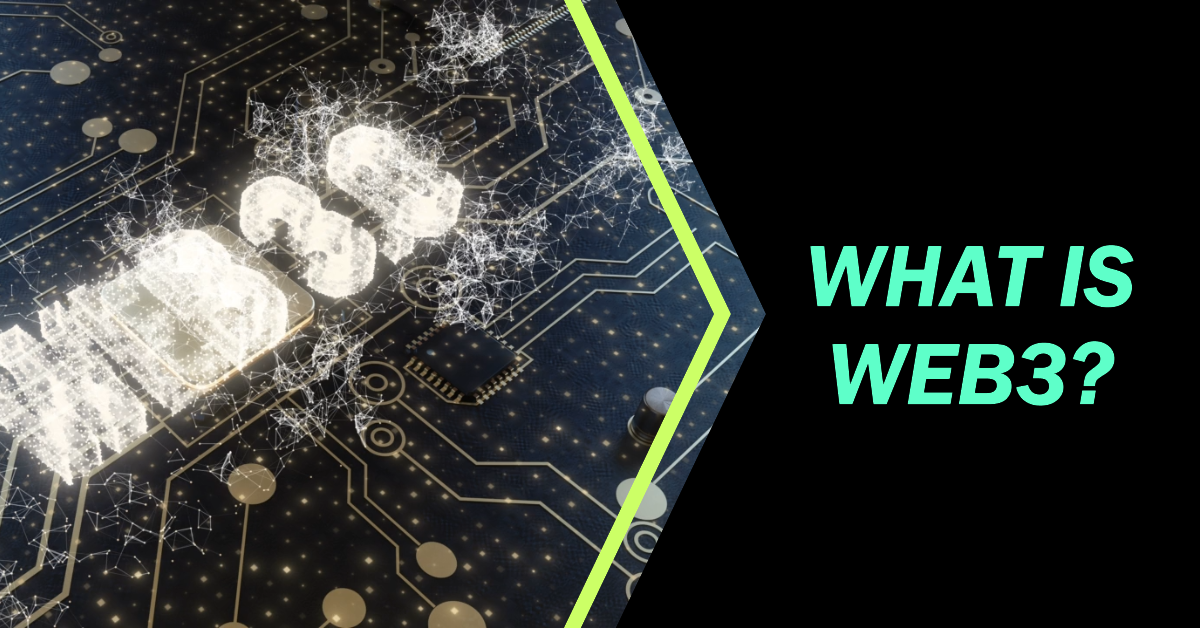
What Is Web3?
Introduction
As the internet continues to evolve, we are entering a new phase known as Web3. This term refers to the third generation of internet technologies, which are set to transform the way we interact with the online world. Web3 aims to create a decentralized, user-centric digital environment that puts users in control of their data and online identities. In this article, we will explore the origins of Web3, its key characteristics, and how it will impact various industries.
The Evolution of the Internet: From Web1 to Web3
To understand Web3, it's helpful to look at the evolution of the internet:
a. Web1 (The Static Web): The first generation of the internet, Web1, emerged in the 1990s as a collection of static web pages that provided users with basic information. Users could read content, but interaction was limited.
b. Web2 (The Interactive Web): In the early 2000s, the internet transitioned to Web2, which focused on user-generated content and interactivity. Platforms like Facebook, Twitter, and YouTube enabled users to create and share content, while e-commerce and online services became increasingly popular.
c. Web3 (The Decentralized Web): Web3 is the next generation of the internet, focusing on decentralization, trustless interactions, and user empowerment. Blockchain technology, cryptocurrencies, and decentralized applications (dApps) are key components of Web3, which aims to create a more transparent, secure, and user-controlled digital environment.
Key Characteristics of Web3
Web3 is defined by several key characteristics that differentiate it from previous iterations of the internet:
a. Decentralization: Web3 aims to reduce reliance on centralized entities, such as big tech companies and governments, by distributing power and control across decentralized networks.
b. User Control: Web3 empowers users to control their data, digital identities, and online interactions. This includes the ability to monetize personal information, choose which data to share, and maintain privacy.
c. Trustless Interactions: Web3 facilitates trustless transactions and interactions, meaning that users do not need to rely on intermediaries or third parties to facilitate exchanges or verify information.
d. Tokenization: The integration of cryptocurrencies and digital assets into Web3 allows for tokenization, which enables users to exchange value and access services without the need for traditional financial systems.
e. Interoperability: Web3 aims to create a more interconnected internet, with different networks and platforms able to interact seamlessly.
Web3 Technologies
Several technologies are driving the development of Web3:
a. Blockchain: Blockchain technology is at the core of Web3, providing decentralized, secure, and transparent networks for data storage and transactions. It is the foundation for cryptocurrencies like Bitcoin and Ethereum and enables the creation of decentralized applications (dApps).
b. Decentralized Applications (dApps): dApps are applications built on blockchain networks, allowing users to interact with decentralized platforms and services. They offer increased security, privacy, and user control compared to traditional applications.
c. Decentralized Finance (DeFi): DeFi is a subset of Web3 that focuses on creating decentralized financial services and products. It allows users to access lending, borrowing, trading, and other financial services without relying on traditional banks or financial institutions.
d. Non-Fungible Tokens (NFTs): NFTs are unique digital assets that can represent ownership of digital or physical items, such as art, collectibles, or virtual real estate. They are part of the Web3 movement and enable new forms of online interaction and value exchange.
Web3 in Practice: Use Cases and Implications
Web3 has the potential to transform various industries and aspects of our daily lives:
a. Privacy and Data Ownership: Web3 offers users more control over their data and privacy by enabling them to decide which information to share and with whom. This could lead to a shift in the way personal data is managed, with users potentially monetizing their data or maintaining strict privacy settings.
b. Digital Identity: With Web3, users can create decentralized digital identities that are not tied to any single platform. This could reduce reliance on centralized systems and offer a more secure and flexible way to manage online identities.
c. Decentralized Social Media: Web3 has the potential to transform social media by replacing centralized platforms with decentralized alternatives. Users would have more control over their content, data, and interactions, while the platforms themselves would be more transparent and resistant to censorship.
d. Decentralized Marketplaces: Web3 can facilitate the creation of decentralized marketplaces for goods and services, enabling peer-to-peer transactions without the need for intermediaries. This could lead to increased competition and reduced fees in various industries.
e. Decentralized Finance (DeFi): As mentioned earlier, DeFi is revolutionizing the financial industry by offering decentralized alternatives to traditional financial products and services. This could increase financial inclusion and provide users with more control over their assets.
f. Gaming and Virtual Reality: Web3 technologies like NFTs and decentralized platforms are already making an impact in the gaming and virtual reality industries. Players can own unique digital assets, and decentralized virtual worlds can offer new opportunities for social interaction, content creation, and monetization.
g. Intellectual Property: The integration of Web3 technologies, such as NFTs, can provide new ways to protect and monetize intellectual property, such as art, music, and digital content.
h. Supply Chain Management: Blockchain technology, a key component of Web3, can be used to create transparent and secure supply chains. This can lead to increased efficiency, reduced fraud, and better traceability of products.
Conclusion
Web3 is an exciting development in the evolution of the internet, with the potential to revolutionize the way we interact with the digital world. By prioritizing decentralization, user control, and trustless interactions, Web3 aims to create a more transparent, secure, and empowering digital environment. As the technology continues to mature, we can expect to see its impact across various industries and aspects of our daily lives.
